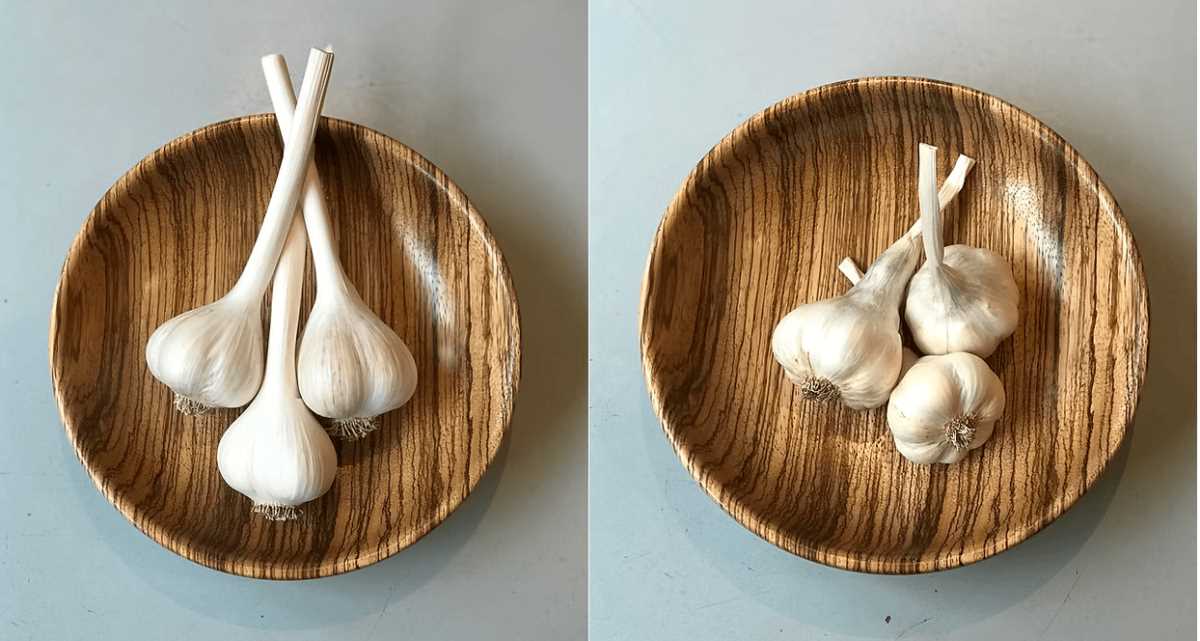
Hardneck garlics can be identified by the flowering stock that it produces, called a scape. These can be harvested in the summer and eaten fresh (grilling scapes on the BBQ or turning them into pesto are tasty options!) The scape starts at the base of the garlic bulb and makes for a stiffer stock, or “neck.” Softneck garlic does not produce a scape and keeps a soft and flexible neck.
Which is better? It’s all a matter of preference of uses and growing conditions. The flexibility of softnecks means that these garlic bulbs can be braided. They also tend to store longer than hardneck varieties because the bulb skins are much tighter at the neck, keeping moisture inside the bulbs and keeping diseases out. Hardneck varieties tend to be more winter hardy and do better in colder climates, whereas softnecks prefer warmer climates.
Looking at bulbs from the outside, it’s hard to tell which are hardneck and which are softneck. But cracking them open will reveal a hard core at the centre of a hardneck, which is lacking in a softneck. You will also find that softnecks have cloves of different sizes, not just a single row as hardnecks do. Hardnecks more closely resemble wild garlics that were harvested by humans thousands of years ago… and they also tend to peel more easily! Apparently hardnecks are more flavourful than softnecks… but we will leave that to you to decide!